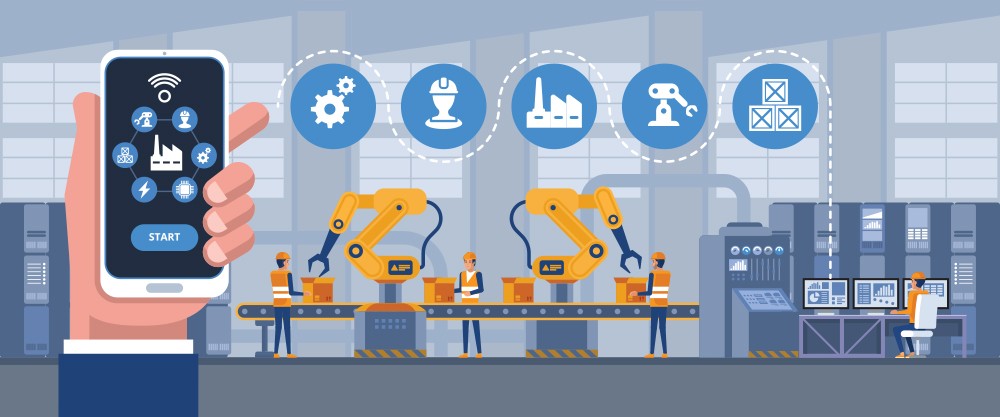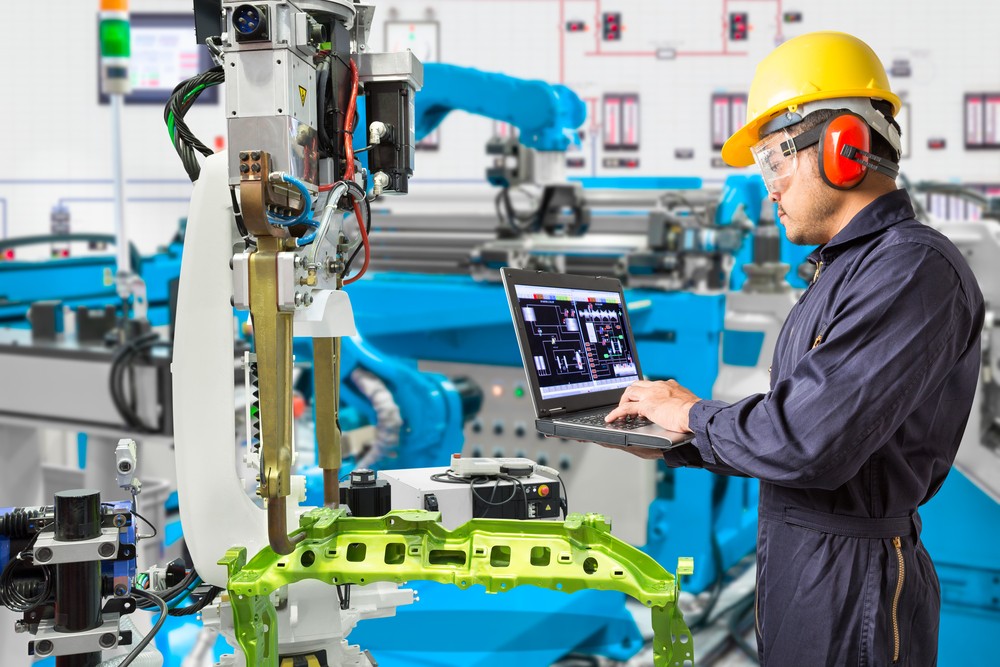5 Ways 5G is Streamlining Factories

Innovation is the backbone of any industrial revolution, and Industry 4.0 is no different. But what makes it a “revolution” is the sweeping change it brings. The level of immersion that comes with Industry 4.0 is only made possible through the digital infrastructure supporting it. That infrastructure is about to get a whole lot more robust, which means Industry 4.0 is poised to take off even faster than it already has. We’re talking about 5G.
5G is coming to a factory near you
5G stands for “5th Generation,” and it’s the proper moniker for the next generation of wireless technology powering digital networks. The simplest explanation is that 5G uses new high-frequency millimeter waves to transmit wireless signals quicker and with better clarity.
5G isn’t necessarily important for what it is, but rather what it enables. It’s not a new technology — simply an improvement on 4G. However, it unlocks a robust new range of capabilities outside the bounds of what current 4G networks offer.

How factories benefit
Factories increasingly rely on digital ecosystems in Industry 4.0. These ecosystems are becoming more complex, requiring more capacity for data transmission at faster speeds, with better security. They’re rapidly outpacing 4G. The advent and rapidly expanding 5G infrastructure unlocks the next level of potential for digitizing factories, allowing them to put newer, better technologies to use.
Here’s a look at five of the real, tangible benefits manufacturers will see as 5G takes root in factories across the nation:
- Real-time data gathering. Consider even one real-time sensor relaying updates to a central hub. At 2-second transmission speeds, that lone sensor is sending 43,200 signals within a 24-hour period! Factories today have tens or even hundreds of similar sensors, which makes for a cumbersome digital infrastructure. 5G makes processing these signals much simpler.
- Better latency. In addition to processing volume, 5G also improves data latency. A 4G network under load will slow to a crawl, meaning data may not always transmit at real-time speeds. 5G and its high-frequency millimeter waves ensure lightning-fast data transmission, even in networks under duress.
- Better edge-of-network functionality. 5G reaches every connected device in a factory ecosystem. That means edge-of-network devices benefit from better integration to the center factory ecosystem. 5G maximizes the interconnectivity of every device, from smart equipment to tablets and mobile phones.
- Unifying ecosystems. The manufacturing cloud was part of the initial Industry 4.0 rollout. Now, the focus is on connecting floor-level ecosystems with the cloud. 5G will build the bridge, syncing factory operations together for a more complete digital environment.
- Better security. It’s no secret that manufacturing is a target industry for hackers and cybercriminals. All this digital technology needs better security and 5G can provide it. Through 5G, blockchain becomes a stronger premise, as do other forms of decentralized encrypted computing. Cloud and distributed security measures benefit from the faster, more reliable coverage 5G offers.
For manufacturers to take full advantage of digital advancements, they need the right infrastructure. 5G is becoming more viable by the day, and soon it’s going to be a prerequisite for just about any new manufacturing technology.
